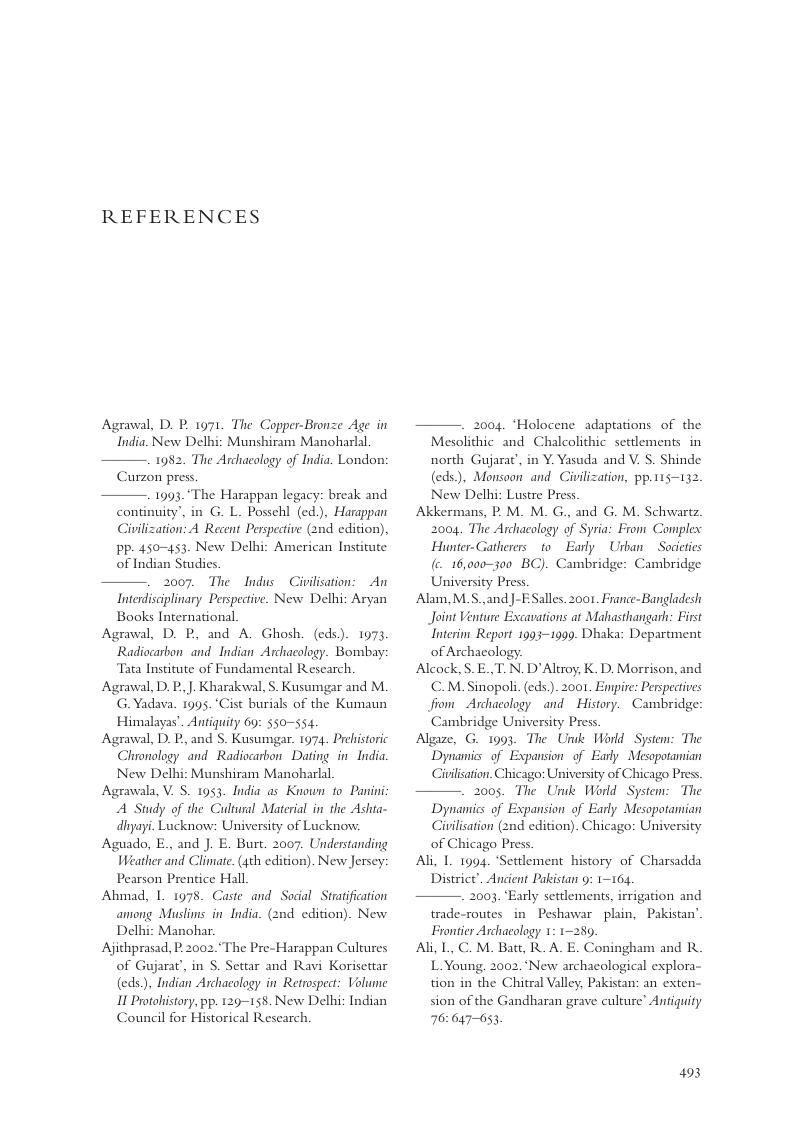Book contents
- The Archaeology of South Asia
- Cambridge World Archaeology
- The Archaeology of South Asia
- Copyright page
- Contents
- Illustrations, Timelines and Boxes
- Book part
- Part One The Context
- Part Two The Indus Valley Tradition (c.6500–1900 BCE)
- Part Three The Early Historic Tradition (c.1900–200 BCE)
- Part Four Conclusions
- References
- Index
- References
References
Published online by Cambridge University Press: 05 September 2015
- The Archaeology of South Asia
- Cambridge World Archaeology
- The Archaeology of South Asia
- Copyright page
- Contents
- Illustrations, Timelines and Boxes
- Book part
- Part One The Context
- Part Two The Indus Valley Tradition (c.6500–1900 BCE)
- Part Three The Early Historic Tradition (c.1900–200 BCE)
- Part Four Conclusions
- References
- Index
- References
Summary

- Type
- Chapter
- Information
- The Archaeology of South AsiaFrom the Indus to Asoka, c.6500 BCE–200 CE, pp. 493 - 522Publisher: Cambridge University PressPrint publication year: 2015

